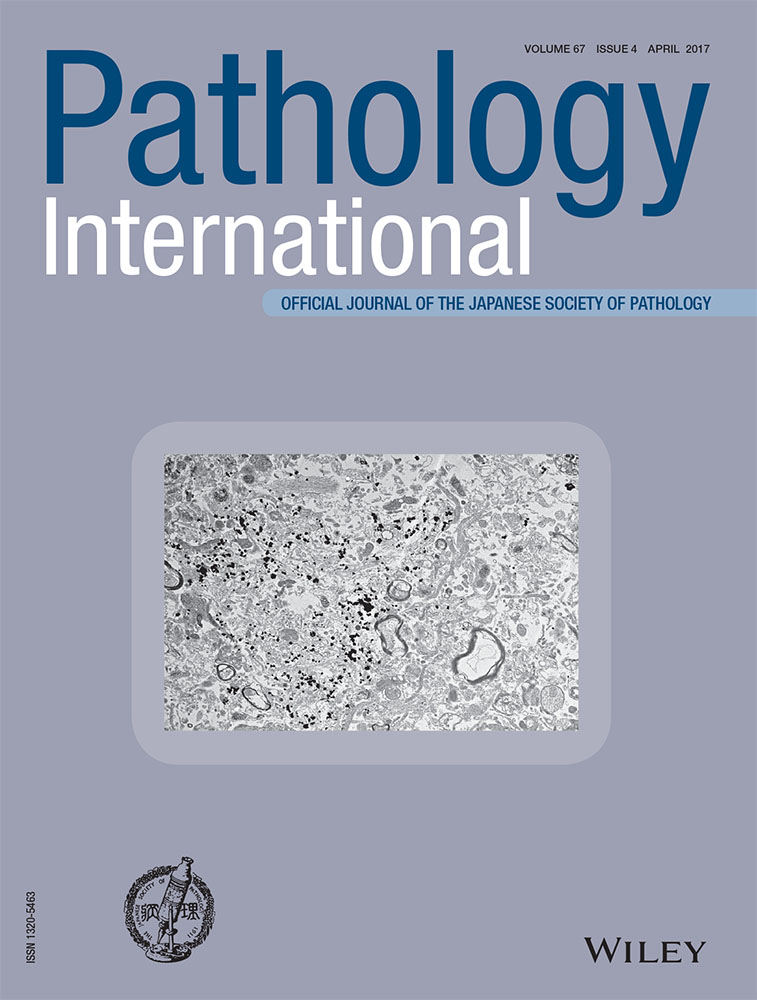A rare case of TFE-related pigmented renal tumor with overlapping features between melanotic Xp11 translocation renal cancer and Xp11 renal cell carcinoma with melanotic features
Abstract
In recent years, an increasing number of TFE3 rearrangement-associated tumors with melanotic features have been reported as primary neoplasm in different anatomical sites, including the kidney. Melanotic Xp11 translocation renal cancer (MXTRC) and Xp11 renal cell carcinoma with melanotic features (XRCCM) have been proposed to be main categories for pigmented lesions in the microophthalmia-associated transcription factor (MiTF/TFE3) family of renal tumors that may show variable degrees of melanocytic differentiation. Herein we report a rare case of TFE3-related pigmented renal tumor showing unusual immunoexpression of cytokeratins (AE1/AE3) and renal cell carcinoma markers (RCC, CD10). Cathepsin-K and Vimentin were diffusely positive whereas melanocytic markers (HMB-45 and Melan-A) displayed weak and patchy expression. We found no labelling for PAX-8, muscle markers (desmin, smooth muscle actin, muscle-specific actin and caldesmon) and S-100. TFE3 fusion was confirmed by break-apart fluorescence in situ hybridization (FISH). This case corroborates previous evidence for overlap in the TFE3-associated cancer family and illustrates that it may not be possible to set a clear cutoff between epithelial (XRCCM) and mesenchymal (MXTRC) subgroups.




